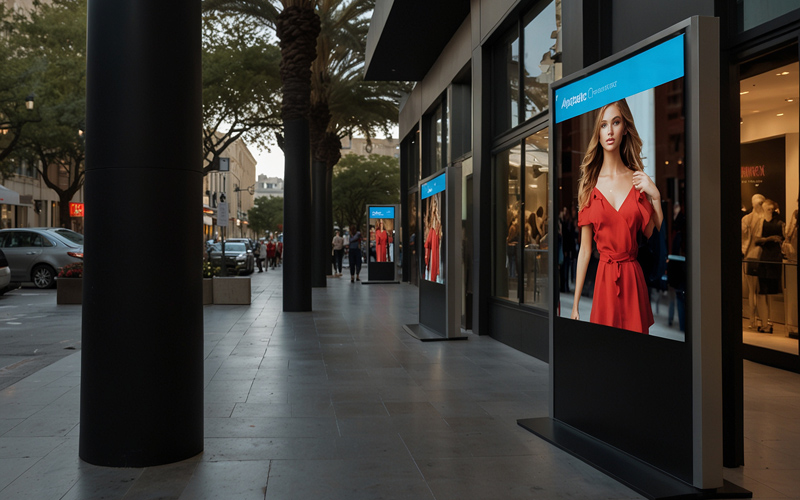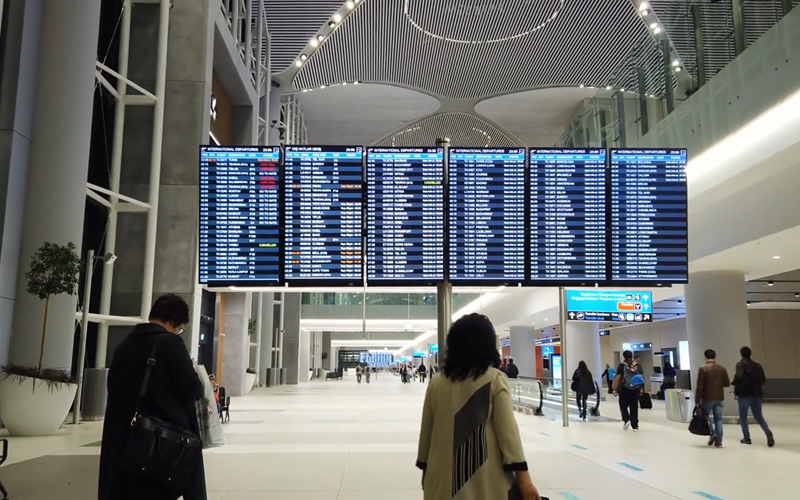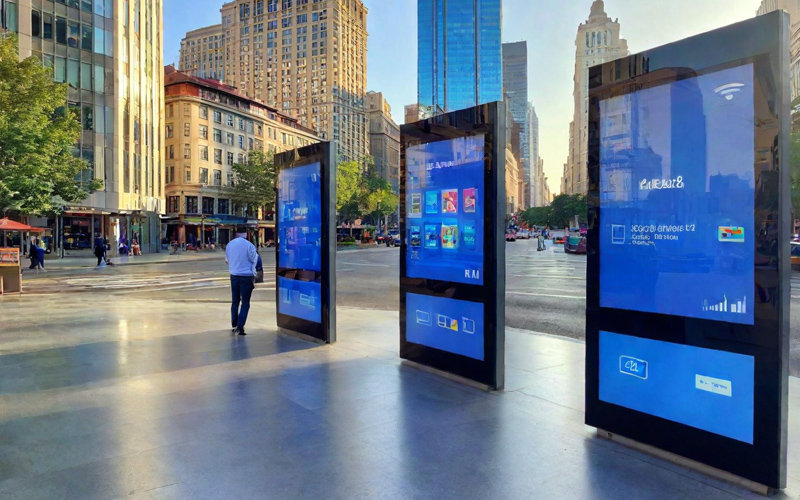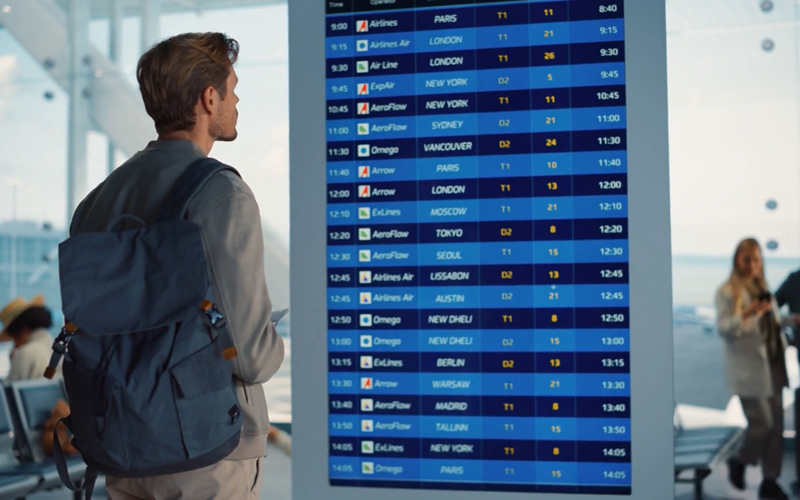As an experienced digital signage professional, we understand the importance of proper upkeep for outdoor digital displays. These dynamic, high-tech screens are invaluable assets for businesses and organizations, effectively showcasing their products, services, and brand messaging to a wide audience. However, the harsh outdoor elements can take a toll on their performance and longevity if not properly maintained.
In this comprehensive guide, we’ll share our expertise on effortless maintenance strategies to keep your outdoor digital signage in top condition. From weatherproofing and dust-proofing to seasonal care and vandalism prevention, we’ll cover all the essential aspects to ensure your investment in digital signage delivers maximum returns.
Importance of Proper Upkeep for Outdoor Digital Signage
Outdoor digital signage is a powerful marketing and communication tool, but it requires diligent care and maintenance to function at its best. Neglecting the upkeep of your outdoor displays can lead to a host of issues, including:
1. Reduced lifespan: Without proper maintenance, the internal components of your digital screens can deteriorate prematurely, leading to costly replacements and repairs.
2. Diminished performance: Dust, debris, and weather-related damage can impair the image quality, brightness, and overall performance of your outdoor digital signage, diminishing its impact.
3. Increased repair costs: Neglecting maintenance can result in more frequent and expensive repairs, significantly eroding your return on investment.
4. Negative brand perception: Poorly maintained outdoor digital signage can convey a negative image of your brand, undermining your marketing efforts and customer trust.
By implementing a comprehensive maintenance plan, you can safeguard your investment, extend the lifespan of your outdoor digital displays, and ensure they continue to deliver maximum value to your business or organization.
Weatherproofing Your Outdoor Digital Signs
One of the primary concerns for outdoor digital signage is protection from the elements. Rain, snow, extreme temperatures, and UV radiation can all wreak havoc on unprotected displays. To weatherproof your outdoor digital signs, consider the following strategies:
1. Enclosures and Housings: Invest in high-quality, weatherproof enclosures or housings specifically designed for outdoor use. These protective cases shield your digital screens from the elements and prevent water, dust, and debris from infiltrating the internal components.
2. Ventilation and Cooling: Ensure your outdoor digital signage has adequate ventilation and cooling systems to dissipate heat and prevent overheating. This can be achieved through the use of fans, vents, and climate-controlled enclosures.
3. Waterproofing: Apply waterproof sealants and gaskets around all openings and seams to prevent water ingress. Regular inspections and maintenance of these seals are crucial to maintaining weatherproofing.
4. UV Protection: Look for outdoor digital displays with anti-glare and UV-resistant coatings or filters to protect the screens from the damaging effects of direct sunlight.
By implementing these weatherproofing measures, you can significantly extend the lifespan of your outdoor digital signage and ensure reliable performance in even the harshest environmental conditions.
Best Practices for Maintaining Outdoor Displays
Maintaining outdoor digital signage goes beyond just weatherproofing. Here are some best practices to keep your displays in top condition:
1. Regular Cleaning: Establish a consistent cleaning routine to remove dirt, dust, and debris from the screen surface and enclosure. Use soft, non-abrasive cloths and approved cleaning solutions to avoid scratching the screen.
2. Preventive Maintenance: Schedule regular inspections and preventive maintenance checks to identify and address any issues before they become major problems. This may include checking for loose connections, faulty components, and proper ventilation.
3. Software Updates: Ensure your outdoor digital signage software is kept up-to-date with the latest security patches, bug fixes, and feature enhancements to optimize performance and minimize downtime.
4. Backup and Redundancy: Implement a robust backup and redundancy system to safeguard your content and settings in the event of a hardware failure or unexpected shutdown.
By following these best practices, you can prolong the lifespan of your outdoor digital signage, maintain its visual appeal, and minimize costly repairs and downtime.
Prolonging the Lifespan of Your Digital Signage
In addition to the weatherproofing and maintenance strategies mentioned earlier, there are several other steps you can take to extend the overall lifespan of your outdoor digital signage:
1. Component Selection: When choosing outdoor digital displays, opt for high-quality, commercial-grade components that are designed to withstand the rigors of the outdoor environment. Avoid consumer-grade hardware, which may not be as durable.
2. Proper Installation: Ensure your outdoor digital signage is installed correctly, following the manufacturer’s guidelines and best practices. Improper installation can lead to premature wear and tear.
3. Monitoring and Diagnostics: Implement a comprehensive monitoring and diagnostics system to track the performance and health of your outdoor digital displays. This can help you identify and address issues before they escalate.
4. Scheduled Maintenance: Develop a regular maintenance schedule that includes cleaning, inspections, software updates, and preventive maintenance tasks. Stick to this schedule religiously to maximize the lifespan of your outdoor digital signage.
By prioritizing long-term durability and implementing a proactive maintenance approach, you can significantly extend the useful life of your outdoor digital displays, ensuring a better return on your investment.
Eco-friendly Maintenance Tips for Digital Signs
As environmental consciousness continues to rise, it’s essential to consider the eco-friendliness of your outdoor digital signage maintenance practices. Here are some tips to help you maintain your displays in a more sustainable manner:
1. Energy-efficient Components: When upgrading or replacing outdoor digital signage, opt for displays and components that are energy-efficient, reducing your overall power consumption and carbon footprint.
2. Recycling and Disposal: Properly recycle or dispose of any old or damaged digital signage components, ensuring they don’t end up in landfills. Work with reputable recyclers to minimize the environmental impact.
3. Sustainable Cleaning Supplies: Use eco-friendly cleaning solutions and microfiber cloths that are gentle on the environment and don’t contain harsh chemicals that can harm the display or the surrounding area.
4. Preventive Maintenance: By performing regular preventive maintenance, you can extend the lifespan of your outdoor digital signage, reducing the need for premature replacements and the associated environmental impact.
Incorporating eco-friendly practices into your outdoor digital signage maintenance routine not only benefits the environment but also demonstrates your commitment to sustainability, enhancing your brand’s reputation and appeal to environmentally conscious consumers.
Seasonal Maintenance for Outdoor Digital Signs
Outdoor digital signage must contend with varying weather conditions throughout the year, requiring tailored maintenance approaches for different seasons:
Spring and Summer
Inspect for any winter-related damage, such as cracks or leaks in the enclosure.
Clean the display thoroughly to remove any accumulated dust, pollen, or debris.
Ensure the cooling system is functioning correctly to prevent overheating during hot weather.
Apply UV-resistant coatings or films to the display to protect against sun damage.
Fall and Winter
Check for any cracks or gaps in the weatherproofing seals and make necessary repairs.
Inspect the heating system to ensure it’s working properly to maintain optimal operating temperatures.
Clear any snow or ice buildup around the display to maintain visibility and prevent damage.
Consider installing additional weatherproofing measures, such as windbreaks or snow shields, if necessary.
By tailoring your maintenance approach to the specific seasonal challenges, you can safeguard your outdoor digital signage and ensure it continues to perform reliably throughout the year.
Preventing Vandalism and Protecting Your Signage
Outdoor digital signage can be vulnerable to vandalism, which can result in costly repairs and downtime. To mitigate this risk, consider the following strategies:
1. Tamper-resistant Enclosures: Invest in outdoor digital signage enclosures that are designed to be vandal-resistant, featuring reinforced construction and tamper-proof hardware.
2. Surveillance and Monitoring: Implement a comprehensive surveillance system, including security cameras and motion sensors, to deter and detect any vandalism attempts.
3. Lighting and Visibility: Ensure your outdoor digital signage is well-lit and positioned in a highly visible area to discourage potential vandals.
4. Coordination with Local Authorities: Establish a rapport with local law enforcement and work closely with them to report any incidents of vandalism and coordinate appropriate responses.
By taking proactive measures to protect your outdoor digital signage from vandalism, you can safeguard your investment and maintain the continuous, uninterrupted operation of your displays.
Dust-proofing Your Outdoor Displays
Dust and debris can be a significant challenge for outdoor digital signage, as they can accumulate on the display surface and internal components, leading to reduced image quality and potential hardware failures. To combat this issue, consider the following dust-proofing strategies:
1. Robust Enclosures: Invest in weatherproof and dust-resistant enclosures specifically designed for outdoor use. These enclosures create a barrier against airborne particles, protecting the internal components.
2. Filtration Systems: Incorporate high-quality air filtration systems into your outdoor digital signage enclosures to trap dust and prevent it from reaching the sensitive internal components.
3. Regular Cleaning: Establish a regular cleaning routine to remove any accumulated dust and debris from the display surface and exterior of the enclosure. Use soft, non-abrasive cloths and approved cleaning solutions.
4. Positive Pressure: Maintain a positive air pressure inside the digital signage enclosure, which can help prevent dust and debris from infiltrating the internal components.
By implementing these dust-proofing measures, you can safeguard your outdoor digital signage from the detrimental effects of airborne particles, ensuring optimal performance and longevity.
Calibration Tips for Outdoor Digital Signage
Proper calibration is crucial for maintaining the image quality and visual consistency of your outdoor digital signage. Here are some tips to ensure accurate and consistent calibration:
1. Calibrate Regularly: Establish a regular calibration schedule, typically every few months, to account for changes in environmental conditions, component wear, and software updates.
2. Use Calibration Tools: Invest in high-quality calibration tools, such as colorimeters and luminance meters, to precisely measure and adjust the display’s color accuracy, brightness, and contrast.
3. Ambient Light Compensation: Calibrate your outdoor digital signage to compensate for changes in ambient light levels, ensuring consistent visibility and image quality throughout the day.
4. Automated Calibration: Consider implementing an automated calibration system that can continuously monitor and adjust the display’s settings to maintain optimal performance.
By following these calibration best practices, you can ensure your outdoor digital signage delivers a visually stunning and consistent experience for your audience, even in the face of changing environmental conditions.
Optimizing the Longevity of Your Digital Screens
To further extend the lifespan of your outdoor digital signage, consider the following strategies:
1. Component Redundancy: Incorporate redundant components, such as backup power supplies and cooling systems, to mitigate the impact of individual component failures.
2. Proactive Replacement: Develop a proactive replacement plan for critical components, such as fans and power supplies, to prevent unexpected failures and downtime.
3. Proper Storage and Handling: When not in use, store outdoor digital signage components in a clean, climate-controlled environment to prevent damage and deterioration.
4. Ongoing Monitoring and Diagnostics: Implement a comprehensive monitoring and diagnostics system to track the performance and health of your outdoor digital signage, allowing you to identify and address issues before they become major problems.
By prioritizing longevity and adopting a proactive approach to maintenance, you can ensure your outdoor digital signage continues to deliver exceptional performance and value for years to come.
Minimizing Repair Costs for Outdoor Digital Signage
Maintaining outdoor digital signage can be a significant investment, but there are strategies you can implement to minimize repair costs:
1. Preventive Maintenance: By adhering to a robust preventive maintenance schedule, you can identify and address issues early, preventing them from escalating into more expensive repairs.
2. Spare Parts Inventory: Maintain a strategic inventory of commonly replaced parts, such as fans, power supplies, and display panels, to reduce downtime and the need for emergency orders.
3. Remote Diagnostics and Troubleshooting: Leverage remote monitoring and diagnostics capabilities to identify and resolve issues quickly, often without the need for on-site visits.
4. Warranty Management: Carefully review and maximize the benefits of the manufacturer’s warranty, ensuring you receive coverage for any eligible repairs or replacements.
By adopting a proactive, cost-conscious approach to outdoor digital signage maintenance, you can significantly reduce the financial burden of repairs and ensure a better return on your investment.
Maintaining the health and longevity of your outdoor digital signage is essential for maximizing your investment and delivering a consistent, impactful experience for your audience. By implementing the strategies and best practices outlined in this guide, you can ensure your outdoor digital displays remain in top condition, withstand the elements, and continue to showcase your brand and messaging effectively.
Remember, a well-maintained outdoor digital signage system not only enhances your brand’s image but also contributes to a better return on investment and a more sustainable future. As you embark on your outdoor digital signage maintenance journey, I encourage you to embrace these proven strategies and prioritize the long-term well-being of your valuable assets.
SUNTUNE is devoted to creating core value for customers and promoting the industry technologies and becoming a premium brand. Contact us today to learn more about our comprehensive outdoor digital signage maintenance solutions and how we can help you keep your displays in top condition.











